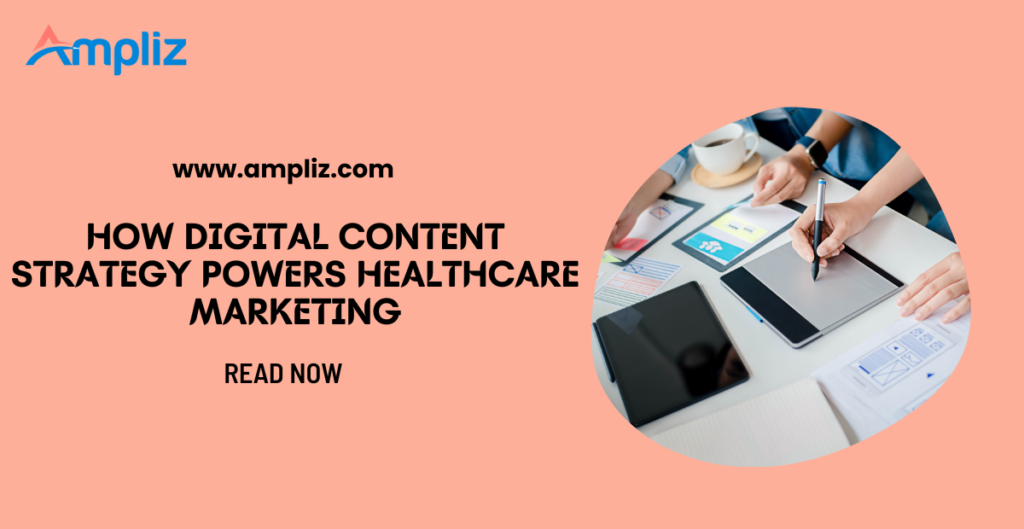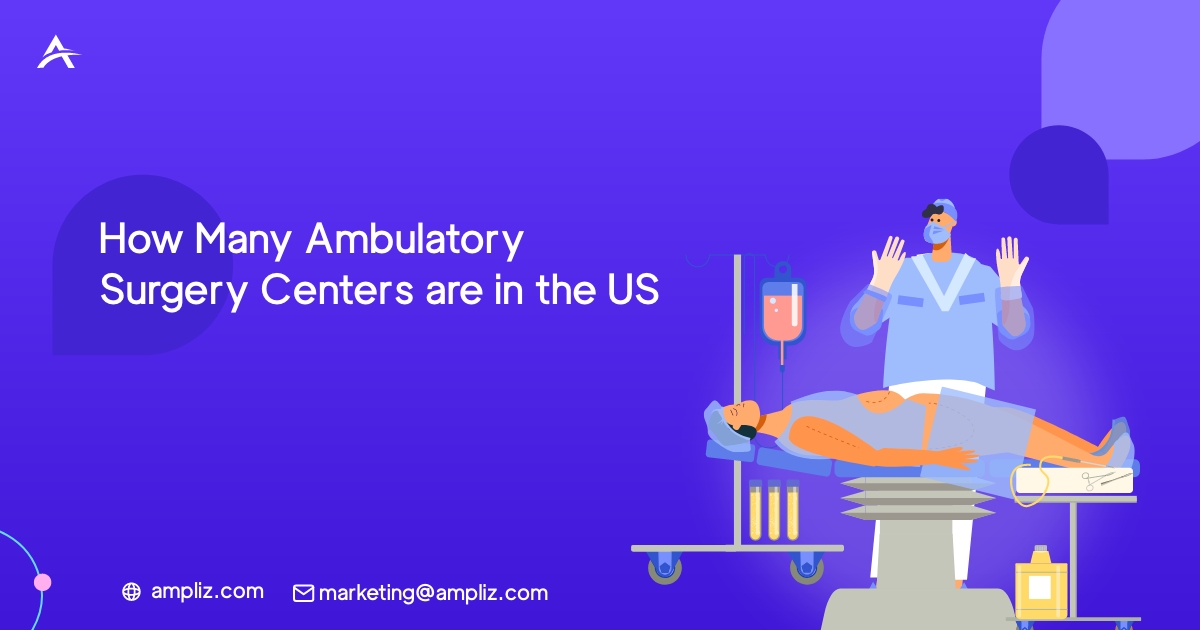Imagine walking into a healthcare practice where every question you have was anticipated and answered before you even stepped through the door. That’s the transformative power of a well-orchestrated digital content strategy in healthcare marketing.
By providing relevant, timely information, building trust through patient engagement, and leveraging cutting-edge technology, healthcare providers can create experiences that resonate with their audience. Through strategic use of digital channels, these practices educate and build lasting relationships with patients, ultimately driving better health outcomes and fostering loyalty.
Curious to know how digital content strategy powers healthcare marketing? Let’s dive in.
10 ways digital content strategy empowers healthcare marketing
Understanding the impact of a strong digital content strategy on healthcare marketing can truly transform your practice. Here are ten dynamic ways that harnessing digital content can empower your healthcare initiatives and connect more deeply with your patients.
1. Enhances patient education
Implementing a digital content strategy can significantly enhance patient education, making it easier for individuals to make informed decisions about their health. According to the Pew Research Center, 72% of internet users have searched online for health information in the past. This underscores the importance of accessible and accurate healthcare content.
A well-structured digital content strategy offers numerous ways to educate patients effectively:
- Accessible Information: Online articles, blog posts, and downloadable resources ensure patients can access reliable health information anytime. This is crucial for anyone who may need immediate answers outside clinic hours.
- Interactive Tools: Features like symptom checkers or interactive quizzes engage patients in learning more about their conditions. These tools not only inform but also encourage proactive management of health issues.
- Educational Videos: Visual content such as explainer videos and webinars can break down complex medical topics into easily digestible pieces. Viewers retain 95% of a message when they watch it in a video compared to just 10% when reading text. Utilizing the best animation software can significantly enhance the quality and appeal of these videos, making them more engaging for patients.
- Email Newsletters: Regularly sent newsletters keep patients updated with the latest health tips, preventive care reminders, and new treatments. Subscribers are more likely to stay engaged with ongoing educational initiatives.
Incorporating these elements into your digital strategy empowers your audience with knowledge that can improve their overall well-being.
Furthermore, educated patients tend to have better treatment outcomes and higher satisfaction rates. As a result, emphasizing patient education through digital means fosters a stronger doctor-patient relationship built on trust.
2. Encourages preventive care
Promoting preventive care through a robust digital content strategy is critical for improving patient outcomes and reducing overall healthcare costs. The Centers for Disease Control and Prevention (CDC) estimates that 75% of the nation’s healthcare spending goes towards treating preventable conditions. Encouraging preventive care can significantly mitigate these costs.
For healthcare marketers, emphasizing preventive care offers multiple advantages:
- Enhanced Quality of Life: Preventive care fosters healthier lifestyles, which contribute to higher life expectancy and reduced incidence of chronic diseases. Strategies promoting nutrition, exercise, and mental wellness can enhance a patient’s quality of life.
- Stronger Patient Engagement: Digital campaigns educating patients about preventive measures encourage proactive participation in their own health management. Engaged patients are more likely to adhere to medical advice and follow-up appointments.
- Compliance with Health Guidelines: Consistent messaging around recommended health practices ensures that patients stay informed about current guidelines. This alignment helps maintain community health resilience against common illnesses.
Incorporating these elements into your digital content strategy not only brings awareness but also motivates individuals toward healthier behaviors. Educating patients on the importance of preventive care fosters a more resilient healthcare system focused on long-term well-being.
3. Improves search engine visibility
Improved search engine visibility can dramatically enhance the reach and impact of your healthcare marketing. In fact, it’s been shown that 93% of online experiences begin with a search engine. This makes it clear why SEO matters so much in healthcare.
When potential patients search for medical information or look for healthcare providers, you want your practice to appear at the top of their search results.
To improve your search engine visibility effectively, you need a robust strategy:
- Keyword Research: Identify keywords that are relevant to your services and what potential patients might be searching for. Use a mix of long and short-tail keywords.
- On-Page SEO: Optimize website content by including chosen keywords in titles, headings, meta descriptions, and throughout the text.
- Quality Content Creation: Regularly publish high-quality articles or blog posts on health-related topics; helpful content is highly valued by both users and search engines.
- Local SEO: Ensure your practice appears in local searches by optimizing Google My Business listings and encouraging patient reviews.
- Mobile Optimization: Make sure your website is mobile-friendly since over 60% of internet traffic comes from mobile devices.
Engaging on social media platforms using fitness hashtags to grow your audience can also drive traffic back to your site. According to Moz, pages with higher engagement on social channels tend to perform better in SERPs (Search Engine Results Pages).
Following these steps consistently will help elevate your website’s ranking over time. This increased visibility can lead to higher patient acquisition rates.
4. Streamlines communication channels
Streamlining communication channels is essential for healthcare marketers aiming to improve patient engagement and operational efficiency.
According to a survey, 57% of healthcare consumers say they have experienced or are interested in digital health communications. This indicates a strong preference toward more accessible and smoother communication pathways.
A streamlined approach offers significant benefits:
- Increased Patient Satisfaction: Effective communication channels ensure that patients receive timely information regarding their appointments, test results, and general health inquiries. Patients who are well-informed tend to be more satisfied with their care.
- Operational Efficiency: Simplifying communication processes reduces the burden on administrative staff, freeing them to focus on other vital tasks. This not only improves scheduling but also optimizes resource allocation and enhances effective resource management within the practice.
- Enhanced Patient Engagement: Consolidating various communication outlets into one cohesive strategy maximizes reach and effectiveness. Integrated systems allow you to push out consistent messages across emails, social media platforms, apps, and sites.
Incorporating these advantages into your digital content strategy helps create an environment where patients feel connected and cared for at all times. Streamlined communication ensures smoother interactions that build trust and long-term relationships with your patient base.
5. Fosters community engagement
A strategic digital content approach can significantly foster community engagement, creating a supportive and interactive environment for your patients. According to Sprout Social, 57% of consumers are more likely to increase their spending with a brand they feel connected to. This statistic highlights the crucial role of building genuine connections in healthcare marketing.
By focusing on community engagement, your healthcare practice can reap numerous benefits:
- Social Media Interactions: Actively engaging with followers through comments, shares, and likes on platforms like Facebook or Instagram strengthens relationships. Personalized responses make patients feel seen and heard.
- User-Generated Content: Encouraging patients to share their own health journeys or success stories creates a sense of belonging. This form of content also adds authenticity that resonates with others in the community.
- Virtual Events: Hosting webinars or live Q&A sessions allows real-time interaction between healthcare providers and the audience. These events provide valuable opportunities for direct communication and feedback.
- Online Forums: Creating dedicated spaces for discussions around various health topics helps build an online community where individuals support each other. Such forums often lead to increased patient satisfaction as people exchange experiences and advice.
Leveraging these strategies not only enhances patient loyalty but also creates an informed, connected community around your healthcare practice. Engaged communities are more likely to advocate for your services organically, driving both retention and acquisition efforts effectively.
6. Supports social proof
Incorporating social proof into your digital content strategy is essential for building credibility and trust with potential patients. According to BrightLocal, 87% of consumers read online reviews for local businesses in 2020. In healthcare marketing, leveraging social proof can make a significant difference in patient acquisition and retention.
There are several ways to effectively integrate social proof into your digital content strategy:
- Patient Testimonials: Highlighting positive experiences from satisfied patients on your site and social media platforms can significantly influence decision-making. Authentic testimonials resonate well because they present real-life benefits of your services.
- Case Studies: Showcase detailed case studies outlining successful treatments or patient journeys. This approach provides concrete examples of how your practice has positively impacted lives, adding depth to the claims you make about your services.
- Expert Endorsements: Featuring endorsements from healthcare professionals or industry experts adds another layer of credibility. These validations assure prospective patients that you are recognized by peers as a trusted authority in the field.
- Before-and-After Photos: If applicable, sharing before-and-after photos offers visual evidence of successful outcomes achieved through your treatments or interventions. This straightforward form of proof can be very persuasive for new patients.
Integrating these elements not only solidifies trust but also enhances engagement with both existing and prospective patients. When people see tangible evidence supporting the quality of care you provide, they are more likely to feel confident about choosing your services.
7. Provides data-driven insights
Utilizing data-driven insights in your digital content strategy is crucial for maximizing the effectiveness of your marketing efforts. According to Forbes, companies that use data-driven marketing are six times more likely to retain customers. In healthcare, understanding what resonates with your audience can drive more informed decisions and better outcomes.
Data-driven insights offer several advantages:
- Personalized Content: By analyzing metrics like website visits, click-through rates, and patient demographics, you can tailor your content to meet the specific needs and preferences of your audience. Personalized messaging has been shown to increase engagement rates by up to 74%, making it a highly effective approach.
- Enhanced Decision-Making: Knowing what works allows you to allocate resources effectively and focus on strategies that yield the highest return on investment (ROI). This approach ensures that you’re not just guessing but making informed choices.
- Improved Patient Outcomes: Data-driven strategies enable a deeper understanding of patient behavior and health trends. Integrating such insights into your content planning can guide educational campaigns focused on preventive care practices.
Harnessing these powerful insights helps create a dynamic digital environment where both engagement and satisfaction thrive. As healthcare evolves, staying responsive through data-informed strategies ensures that you’re aligned with the evolving needs of your patients.
8. Promotes telehealth services
Advertising telehealth services is increasingly critical in today’s health-conscious world. According to McKinsey, telehealth usage surged 38 times higher than pre-COVID levels in 2021.
Telehealth offers numerous advantages that make it important to advertise:
- Enhanced Accessibility: Telehealth breaks down geographical barriers, making it easier for patients in remote areas or with mobility issues to access healthcare services.
- Patient Convenience: Offering virtual consultations saves patients time and money spent on travel or waiting-room delays. GlobalMed indicates that around 74% of millennials prefer digital health solutions, like video appointments, over traditional visits.
- Continuity of Care: Telehealth helps maintain continuous care, especially for chronic disease management or follow-up appointments for those who live farther away.
- Increased Appointment Adherence: Digital reminders and ease-of-access reduce no-show rates significantly. A study published in JAMA Network found that no-show rates dropped significantly after implementing telehealth options.
- Cost Efficiency: Telemedicine platforms help lower operational costs for both providers and patients by reducing overhead expenses associated with in-person visits.
Highlighting the convenience, accessibility, continuity, adherence improvements, and cost savings makes a compelling case for adopting telehealth services among your patient base.
9. Supports brand loyalty
A digital content strategy can bolster brand loyalty among patients. According to a report by InMoment, 77% of consumers have maintained relationships with specific brands for over a decade. For healthcare providers, building and sustaining such long-term trust is valuable.
Several reasons highlight why brand loyalty is crucial:
- Consistent Revenue: Loyal patients are more likely to return for additional services, ensuring a steady stream of income. Harvard Business Review states that increasing customer retention rates by just 5% can boost profits by 25% to 95%.
- Patient Referrals: Satisfied, loyal patients often become advocates for your practice, referring friends and family. Nielsen reports that 92% of people trust recommendations from individuals they know over any other form of advertising.
- Cost Efficiency: Acquiring new patients is significantly more expensive than retaining existing ones. Bain & Company finds it costs five times as much to attract a new customer compared to retaining an existing one.
By emphasizing these elements through a targeted digital content strategy, you create an emotional bond with your audience that fosters long-term relationships. This connection translates into sustained revenue streams, increased referrals, cost efficiency in marketing efforts, competitive differentiation, and valuable patient feedback.
10. Adapts to trends and innovations
Adapting to trends and innovations is paramount for maintaining relevance and achieving sustained growth in the healthcare sector. Staying current with emerging technologies and industry shifts keeps your practice on the forefront of medical advancements.
Adapting to trends and innovations is crucial for several reasons:
- Enhanced Patient Care: Incorporating the latest medical technologies, such as AI diagnostics, wearable health devices, and advancements in clinical diagnostics, can lead to better patient outcomes.
- Operational Efficiency: Leveraging new tools like telehealth platforms or electronic health records (EHR) systems streamline admin tasks. McKinsey indicates that integrating digital solutions can improve operational efficiency by up to 20%.
- Competitive Edge: Staying ahead in adopting industry innovations ensures that your practice stands out among competitors. Hospitals incorporating cutting-edge tech often experience higher patient satisfaction scores, offering a distinct competitive advantage.
By continuously evolving alongside technological advancements, your healthcare practice remains agile, efficient, and aligned with modern patient expectations. This forward-thinking approach enhances patient care and positions you at the vanguard of the healthcare industry.
Don’t overlook the value of a digital content strategy
As you can see, an effective digital content strategy can revolutionize the way you connect with patients and elevate your healthcare marketing efforts. Don’t let your practice fall behind in this digital age. Start by implementing some of these strategies today to enhance patient education, foster loyalty, and build a supportive community around your brand.
Ready to take your healthcare marketing to the next level? Engage with us or explore our other blog posts for more insights on crafting a successful digital strategy for your brand.



